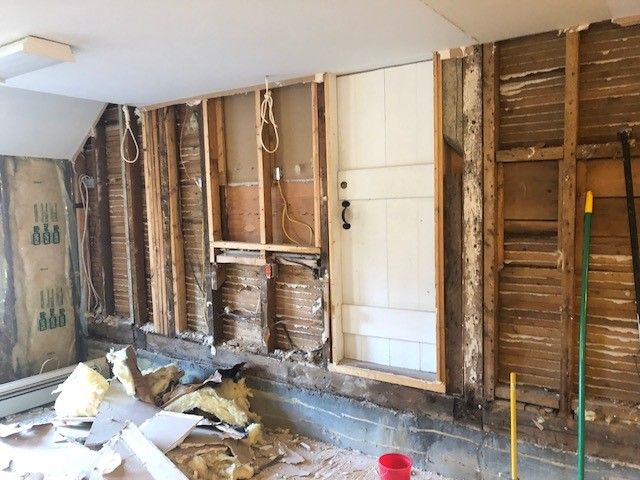Maria Mitchell Vestal Street Observatory Seminar Room Updates
In 1987, the MMA added what was referred to as the Seminar Room Addition. It attaches to the Maria Mitchell Vestal Street Observatory (MMO) on the west side of the MMO and abuts what we have referred to as the Astronomer’s Cottage since we acquired the ca. 1830 structure in about 1922. Since 1987, the Seminar Room – so named as it provides lecture and work spaces for our astronomy interns and astronomy staff and others – has seen really no updates or changes. That is about thirty-six years – and it’s in need. We did add new work areas but it was minor changes. Now, with a gift from a descendant of Maria Mitchell’s younger brother, William Forester Mitchell, we are embarking on some updates to bring the Seminar Room into the 21st century – as we work to conserve the historic MMO.
On January 2, 2024, we began the demolition work (I hate the word demolition but this is a 1987 building so I feel a bit more comfortable.) We will be making some much needed office spaces, expanding the meeting and study space for the astronomy interns, making climate updates, improving the lighting and flooring, and making a small astronomy library space. Reminder that this is just to the 1987 space and only its interior – the historic observatory is having its own conservation focused work completed and we hope to begin to work on the interior of that portion next fall now that the exterior work was all completed this past spring. But what you are seeing in this image is the backside of the plaster and lath that makes the backside of the wall of the Astronomer’s Cottage – and the sill and other supporting timbers – pretty fun to see. It was first exposed when they added the Seminar Room addition in 1987 and removed the shingles and sheathing at that time – not something that was done this time and I wish they could have saved the sheathing boards and put the insulation between sheathing and the lathe!
Stay tuned!
JNLF
Recent Posts





